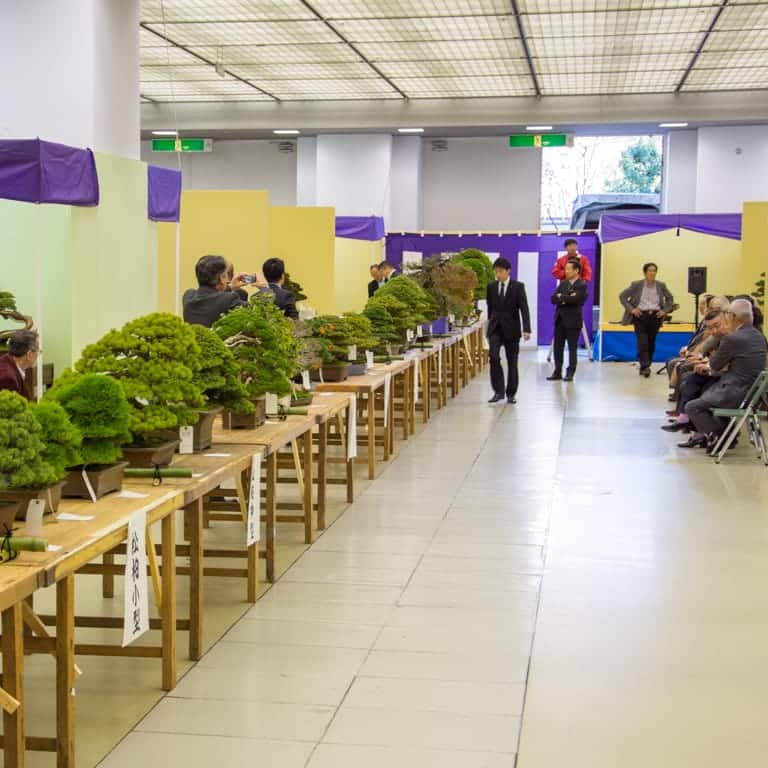This week’s topic is scoring multi-point displays – displays that feature more than one bonsai within a six-foot space.
This is the most common approach to displaying small and medium-sized bonsai, trees that are up to 8″ and 18″ tall respectively.
While it’s relatively easy to come up with a system that accounts for characteristics inherent to a single tree (think trunk, roots, branches, quality of work, etc.) or display (container, accent, arrangement of display elements), it’s another matter to evaluate displays that feature multiple trees.
In short, the idea is to take into consideration all of the elements within a given display space.
We’ll be using a scoring system of 1-7 this week. You’re free to take a relative or absolute approach to the judging.
In a relative system, the lowest scoring displays will receive 1s and the highest will receive 7s. In an absolute scoring system, 1 represents the bottom tier of trees you can imagine and 7 represents the best trees you can imagine.
As you can see, depending on the approach you take, you might end up awarding very different scores than the next judge.

Judges at the 2015 Taikan-ten
As a hedge against this variance, we plan to use what are known as Z-scores. Very simply put, Z-scores measure the distance of a given score to the mean (feel free to read up about this here).
Using Z-scores allows us to compare scores from different judges who may distribute scores according to different criteria. Your test scores in this exercise will be used to help us get this right for this fall’s Expo.
What else to say before you get to the scoring? For one, the trees may look small in the photographs. Although it will be tricky to evaluate details of small trees in small photographs, enough design cues show through to make the judging fun.
Another thing to mention is that the display of medium and small bonsai display is highly conventionalized in Japan. That said, the basics are simple: aim to present as much contrast as possible in terms of tree size, style, and species as well as container (and stand) style, shape, and color.
On to the scoring: see the Kokufu 94 Scoring Exercise part 2 to get started. I’ll publish the results of the scoring in an upcoming post.
News & Updates
- Eric Schrader and I had a great time talking about growing bonsai and putting on exhibits with Ryan Neil on the Asymmetry podcast. You can hear the episode on the Asymmetry podcast.
- If you’re a vendor, volunteer, or exhibitor at the Pacific Bonsai Expo, we’ll be sending out information soon about how to participate. Stay tuned for updates over the coming weeks.
- Looking for bonsai soil in the San Francisco Bay Area? I’m having a damaged bag sale for a variety of products including shohin akadama, medium akadama, kanuma, kiryu, and hyuga while supplies last. For those outside the Bay Area, soil is available on the Indian Bonsai Art Online Store.
✕
Subscribe to Indian Bonsai Art
New Posts Delivered Every Tuesday and Friday
